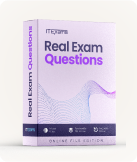CWNP CWNA-108 - Certified Wireless Network Administrator Exam
Page: 1 / 15
Total 75 questions
Question #1 (Topic: Single Topic)
An RF signal sometimes bends as it passes through some material other than free space. What is the term that describes this behavior?
A. Refraction
B. Warping
C. Scattering
D. Reflection
Answer: A
Question #2 (Topic: Single Topic)
What can an impedance mismatch in the RF cables and connectors cause?
A. Increased range of the RF signal
B. Fewer MCS values in the MCS table
C. Increased amplitude of the RF signal
D. Excessive VSWR
Answer: D
Question #3 (Topic: Single Topic)
What factor does not influence the distance at which an RF signal can be effectively received?
A. Receiving stationג€™s radio sensitivity
B. Receiving stationג€™s output power
C. Transmitting stationג€™s output power
D. Free Space Path Loss
Answer: A
Question #4 (Topic: Single Topic)
A WLAN transmitter that emits a 50 mW signal is connected to a cable with 3 dB loss. If the cable is connected to an antenna with 9dBi gain, what is the EIRP at
the antenna element?
the antenna element?
A. 26 dBm
B. 13 dBm
C. 23 dBm
D. 10 dBm
Answer: C
Question #5 (Topic: Single Topic)
In a long-distance RF link, what statement about Fade Margin is true?
A. A Fade Margin is unnecessary on a long-distance RF link if more than 80% of the first Fresnel zone is clear of obstructions.
B. The Fade Margin is a measurement of signal loss through free space and is a function of frequency and distance.
C. Fade Margin is an additional pad of signal strength designed into the RF system to compensate for unpredictable signal fading.
D. The Fade Margin of a long-distance radio link should be equivalent to the receiverג€™s low noise filter gain.
Answer: C
